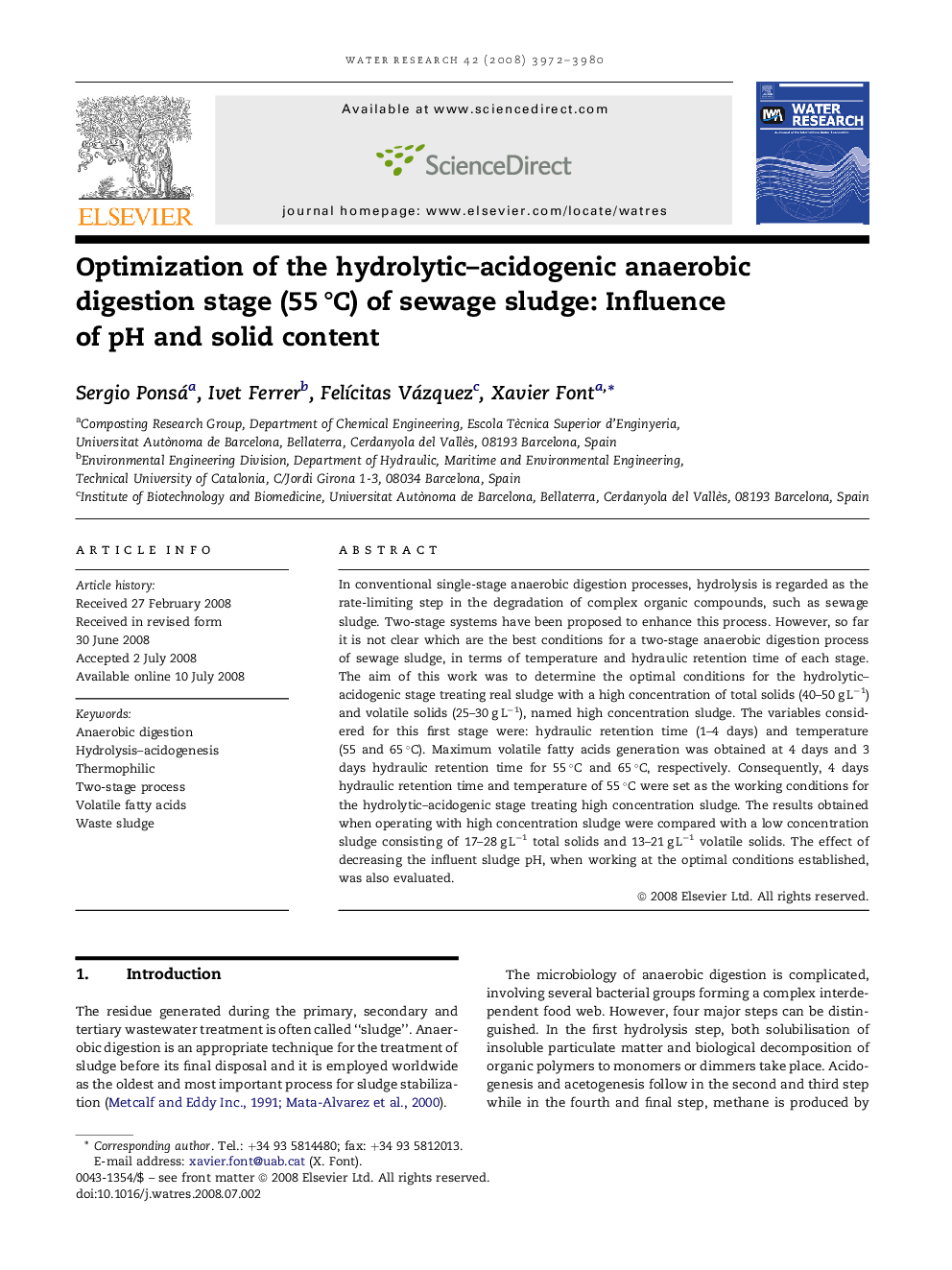| Article ID | Journal | Published Year | Pages | File Type |
|---|---|---|---|---|
| 4485989 | Water Research | 2008 | 9 Pages |
In conventional single-stage anaerobic digestion processes, hydrolysis is regarded as the rate-limiting step in the degradation of complex organic compounds, such as sewage sludge. Two-stage systems have been proposed to enhance this process. However, so far it is not clear which are the best conditions for a two-stage anaerobic digestion process of sewage sludge, in terms of temperature and hydraulic retention time of each stage. The aim of this work was to determine the optimal conditions for the hydrolytic–acidogenic stage treating real sludge with a high concentration of total solids (40–50 g L−1) and volatile solids (25–30 g L−1), named high concentration sludge. The variables considered for this first stage were: hydraulic retention time (1–4 days) and temperature (55 and 65 °C). Maximum volatile fatty acids generation was obtained at 4 days and 3 days hydraulic retention time for 55 °C and 65 °C, respectively. Consequently, 4 days hydraulic retention time and temperature of 55 °C were set as the working conditions for the hydrolytic–acidogenic stage treating high concentration sludge. The results obtained when operating with high concentration sludge were compared with a low concentration sludge consisting of 17–28 g L−1 total solids and 13–21 g L−1 volatile solids. The effect of decreasing the influent sludge pH, when working at the optimal conditions established, was also evaluated.
